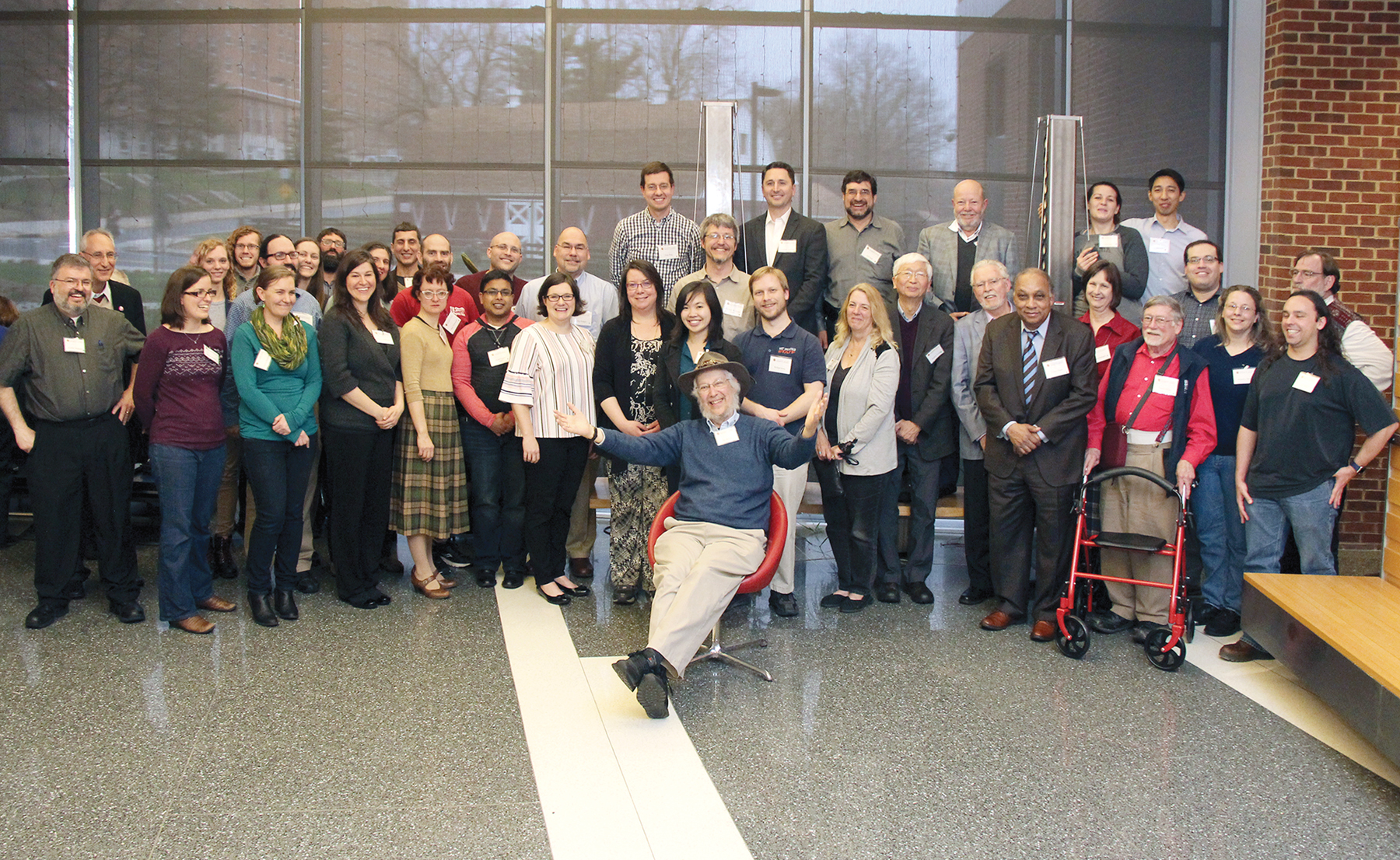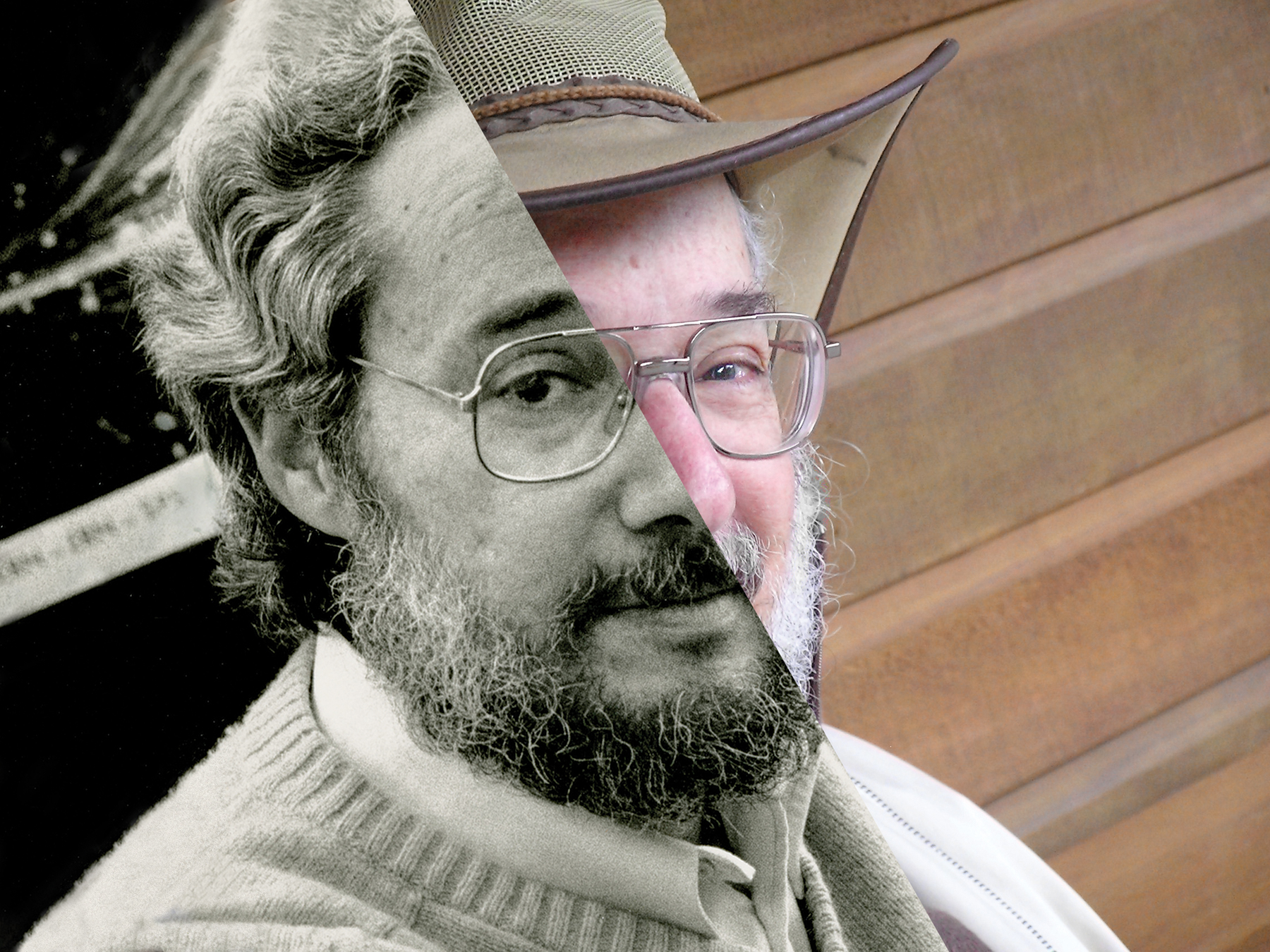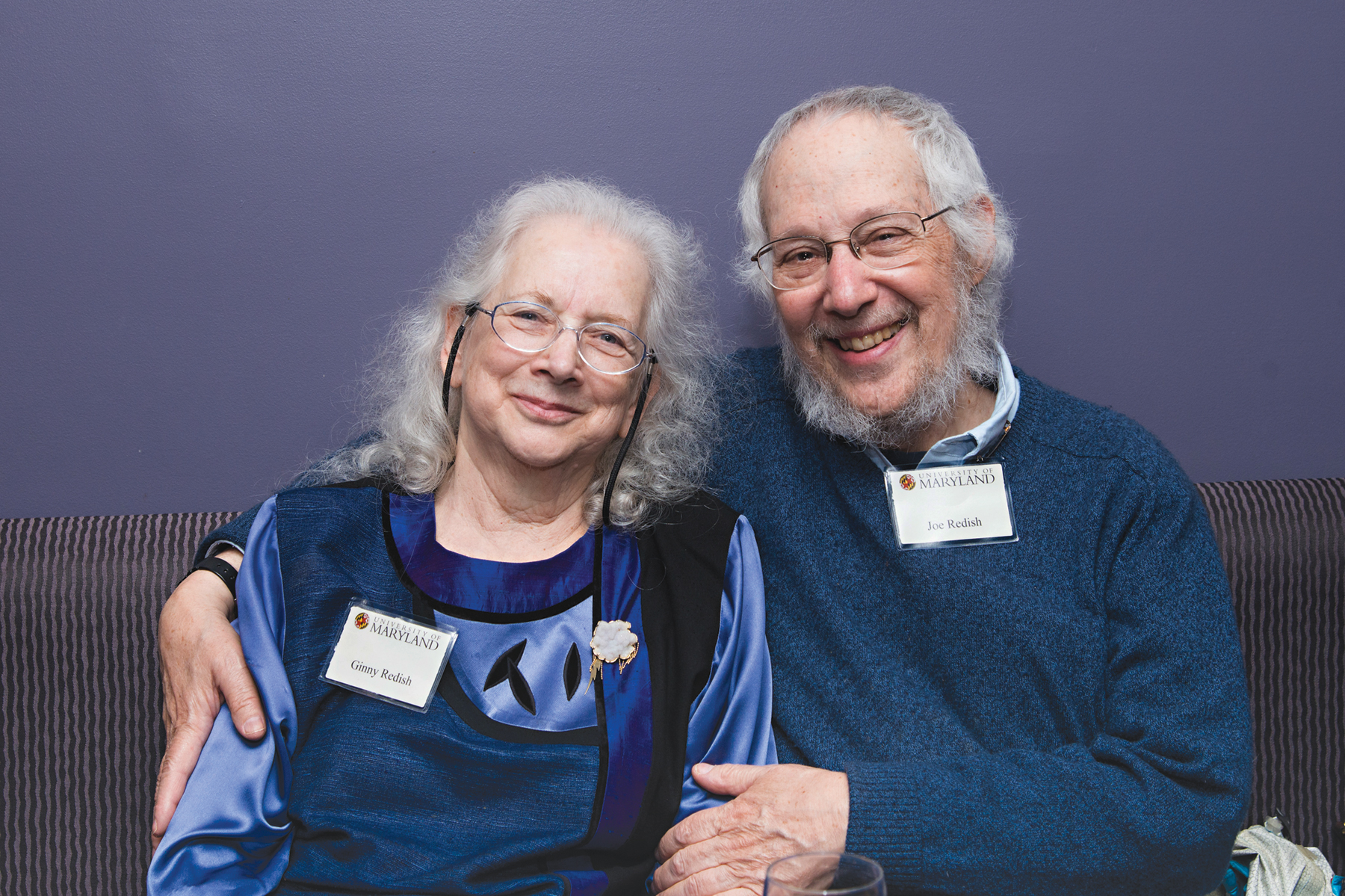Joe Redish: Walking the Walk of Physics Education

On March 31, 2017, more than 150 people gathered on campus to celebrate University of Maryland Physics Professor Edward “Joe” Redish’s 75th birthday and his nearly 50 years with the Department of Physics. They represented five continents and five decades of Redish’s impact as a colleague, teacher, mentor, father and friend. They honored Redish with stories from his past and shared presentations on how students learn physics and science—a research area Redish helped pioneer. To honor his contributions to the field and their lives, dozens of alumni and friends also contributed to the E.F. Redish Endowed Professorship in Science Education at UMD, which Redish and his wife established in 2011 to support a continued emphasis in the field.
Michael Wittmann, M.S. ’96, Ph.D. ’98, physics, clearly recalls his first encounter with Joe Redish. “I asked Joe what he did, and he described something about studying how students learn physics. He handed me some data to show that many students weren’t really understanding the subject. I thought he was just full of it, just wrong.”
After several more meetings and what became a routine of respectful disagreement, the light went on for Wittmann.
“In that one set of conversations, Joe converted me from a
Wittmann went on to join Redish’s first cohort of students in UMD’s Physics Education Research Group. Today, as a professor of physics at the University of Maine, Wittmann is a leading member of its Physics Education Research Laboratory. He is one of the hundreds of faculty members around the world who use the data Redish and his colleagues have collected to shape their own physics teaching.
“Joe wants students to learn to apply conceptual laws to fundamental problems,” said Distinguished University Professor of Physics Jordan Goodman, one of Redish’s early collaborators in physics education. “It’s something a lot of people havven’t done before, but that’s what science is all about.”

Redish came to UMD in 1968 and conducted research in theoretical nuclear physics. In 1981, he became intrigued by the potential that personal computers offered for educating physics students. Soon after, Redish agreed to become chair of the Department of Physics (the third largest in the country at the time), in part to increase the department’s efforts in innovative physics teaching. For 10 years, he led projects that broke new ground, placing Maryland among the first universities to integrate computers into physics instruction.
“The idea was that students could write code to understand equations they couldn’t mathematically follow at that point,” said Goodman. “Joe took that turn to physics education.”
In 1992, Redish decided to concentrate on physics education. It was a move that would help make UMD a leader in science education research.
“Students came in thinking they needed to memorize, not understand,” said Redish. “We wanted to change that attitude.”
Looking at things in a different way is something Redish has always loved about science. Redish’s son, David, a professor of neuroscience at the University of Minnesota, said, “I grew up with the idea that you’re always exploring something new.”
Several speakers at the golden anniversary event in March described energy-filled late nights when colleagues and students would gather in the Redish home to argue about science and eat homemade chocolate chip cookies. Even as kids, David and his sister, Deborah Redish Fripp, were in the thick of the academic conversations.
“Dad would also take discussions back to the university that he and I would have when I was taking physics in high school,” said Fripp, a zoologist and president of the research consulting and data analysis company Darwin’s Ark. “There would be something I didn’t understand, and the next thing I know, he’s going into his class and saying ‘My daughter has this issue and this means I need to explain this in a completely different way.’”
Redish’s research and work with other UMD physics faculty members, including Jack Wilson, John Layman and David Hammer, started to attract interest. College Park Professor of Physics S. James Gates Jr. volunteered to help with some of the first observation sessions that included instructors and students.

“Joe was beginning to look at physics education with the idea that the same sort of scientific approach he used in the study of the nucleus ought to be able to lend insight into the effective teaching and learning of physics,” Gates said.
In 2010, the Howard Hughes Medical Institute awarded UMD a National Experiment in Undergraduate Science Education (NEXUS) grant that would take Redish’s work in yet another new direction.
“NEXUS was an effort to develop an entirely new physics course for life sciences students—one that builds on their knowledge of biology and chemistry and gives them unparalleled preparation for their future careers in science and medicine,” said Kaci Thompson, assistant dean for science education initiatives in the College of Computer, Mathematical, and Natural Sciences. “This was an extraordinary feat. There was nothing else like it—no textbook, no syllabus, no existing curriculum. It was born out of vigorous—sometimes contentious—discussions among biologists, physicists, chemists and mathematicians. Joe’s leadership and guidance were instrumental.”
The NEXUS project was ultimately a success, and materials developed for it will form the core of a teaching resource being curated by the American Association of Physics Teachers (AAPT). Todd Cooke, professor of cell biology and molecular genetics and director of the Integrated Life Sciences program in the university’s Honors College, agrees with Thompson that NEXUS started out with some vigorous discussions.
Cooke first met Redish at an event to honor faculty teaching excellence. “I responded to a physicist sitting next to me with the snarky comment, ‘You know, you guys do a great job teaching physics, but my biology students can’t use it in their biology classes,’” said Cooke. “Across the table was Joe, who had, unbeknownst to me, already devoted a decade to studying how biology students learn introductory physics. If I were Joe, I would have reached across the table and smacked me across the side of the head. But Joe is more wily and devious than me, so he invited me to lunch to start arguing about how to teach physics. And that was the start of our collaborative efforts.”
Redish’s legacy extends well beyond College Park and through multiple generations.
“Joe is why I am in the field of physics education research and the reason I developed such a passion for this field of study,” said Mel Sabella, M.S. ’97, Ph.D. ’99, physics, now a professor of physics at Chicago State University and vice president of AAPT. “Respecting and valuing the ideas of my students and being a teacher who thoroughly enjoys partnering with my students on education reform is something I learned from Joe.”
Today, at 75, Redish still shows his love of teaching. He walks through every row of the large lecture hall where he teaches physics to biology students. He knows all of the students’ names, giving them questions to debate in small groups. “Find someone to talk to,” he insists. He’s excited about the student collaboration and teaching possibilities available in the new Edward St. John Learning and Teaching Center.
“Science is not just about science; it’s about learning to have scientific conversations,” said Redish. “In science, learning to talk the talk is learning to walk the walk.”
Wrtten by Ellen Ternes
This article was published in the Fall 2017 issue of Odyssey magazine. To read other stories from that issue, please visit go.umd.edu/odyssey.


